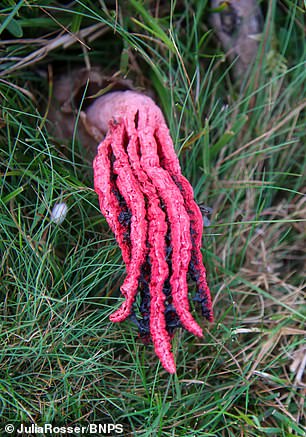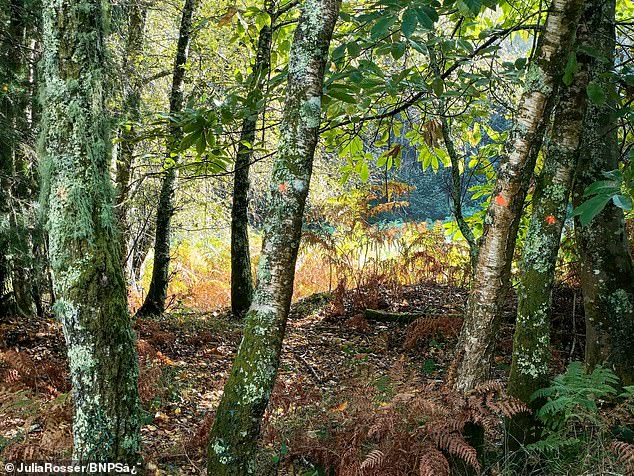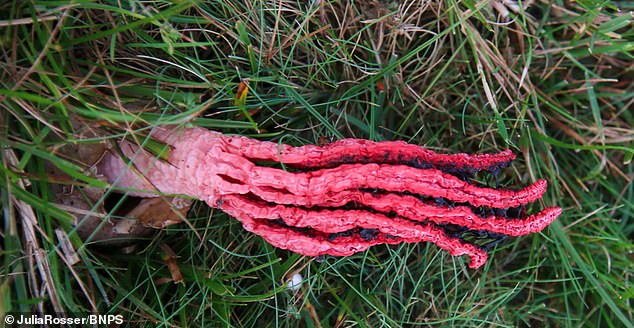Urgent warning about rare ‘Devil’s Fingers’ fungus that smells like rotting MEAT and looks like a ‘hand reaching out of a grave’
At first glance, you’d be forgiven for mistaking them for stills from the latest series ‘The Last of Us’.
But the fungus in the photos is very real and was recently spotted in the New Forest.
The alien fungus has been nicknamed ‘Devil’s Fingers’ thanks to its creepy, hand-like appearance.
In addition, it emits a disgusting smell, which those unlucky enough to encounter it have described as ‘like rotting meat’.
Julia Rosser, 67, a retired teacher who found it, said: ‘This looked more like a hand than I’ve ever seen before. It seemed as if it was reaching out from beyond the grave. It looked very creepy.”

At first glance, you’d be forgiven for mistaking them for stills from the recent series ‘The Last of Us’. But the fungus in the photos is very real and was recently spotted in the New Forest

Devil’s Fingers are usually found in late October, but appeared in the New Forest (pictured) early this year due to the wet weather
Devil’s Fingers are usually found in late October, but have appeared early this year due to the wet weather.
Mrs Rosser said, “I found Devil’s Fingers in about the same area last year, so I was looking for them.
“They burst out of the ground with these red tentacles or fingers.”
The strange-looking fungus is also called ‘octopus stinkhorn’ or ‘octopus fungus’.
The fungus is native to New Zealand and Australia and is believed to have been brought to France in military supplies during World War I.
‘The species is native to the Southern Hemisphere and was first discovered in Britain in 1914,’ Wildlife Trusts explains.
The fungus hatches from a slimy, gelatinous ‘egg’ and as it grows, the tentacle-like arms begin to extend.
Although it is easy to recognize due to its bright red colour, it is quite rare in Britain.

The fungus hatches from a slimy, gelatinous ‘egg’ and as it grows, the tentacle-like arms begin to extend. Although it is easy to recognize due to its bright red colour, it is quite rare in Britain
‘About 5cm high, tentacles can be up to 7cm long,’ Wildlife Trusts said.
‘Usually there are at least three or four tentacles.
‘Often found among leaf litter under trees or in parks and gardens.’
However, if you don’t see it, you can probably smell the mold if it is nearby.
‘This fungus smells like rotting flesh which attracts insects to the arms where the spores are found,’ Wildlife Trusts added.
‘The spores are then spread by the visiting insects.’
